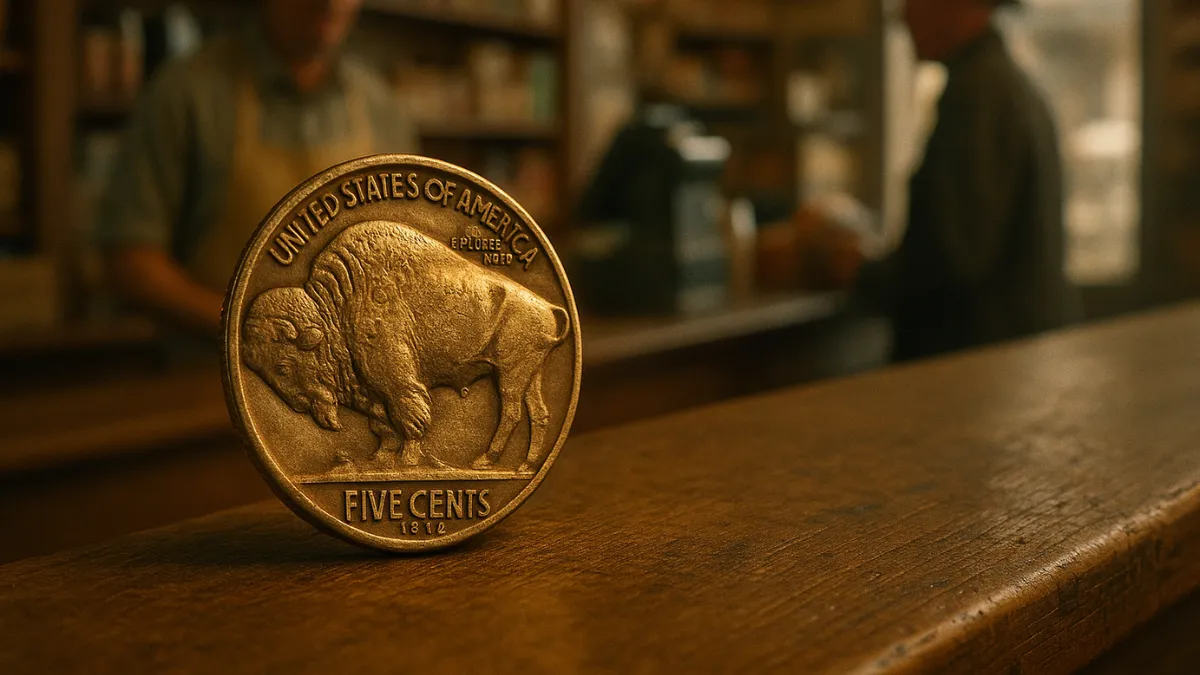The Million-Dollar Nickel That Might Be Sitting in Your Spare Change
In an era where tap-to-pay and mobile wallets are the norm, it’s easy to overlook the humble coins jingling at the bottom of your bag. Yet, tucked away in your spare change could be a nickel worth millions. While it might sound like a wild tale, it’s a very real possibility in the world of coin collecting. One exceptionally rare Buffalo Nickel has recently fetched a staggering $6.1 million — and some collectors believe that one just like it might still be hiding in plain sight.
A Coin With Historic and Monetary Value
Known officially as the Indian Head Nickel, the Buffalo Nickel was produced in the United States between 1913 and 1938. It features a striking image of a Native American on the front and an American bison on the back — capturing both the spirit and history of early 20th-century America. Though this coin was minted in the millions, only a small number hold significant value today.
What makes some of these nickels so coveted are unique combinations of minting errors, rarity of certain dates and mint marks, and the coin’s physical condition. A few of these have reached legendary status, commanding eye-watering prices at auction. One such coin recently made headlines for being sold at an astounding $6.1 million, a reflection of its rarity, pristine state, and historical significance.
What Sets This Particular Nickel Apart?
The buzz surrounds a 1913 Buffalo Nickel that experts believe was minted in Denver — an extraordinary find considering that most 1913 issues came from Philadelphia and San Francisco. A Denver-minted version is virtually unknown, making it one of the rarest pieces in U.S. numismatic history.
The coin’s incredible value stems from a combination of factors: extremely limited production, impeccable preservation, and skyrocketing demand among collectors. The most valuable examples maintain their original mint luster, with clear and legible date markings. Details like the buffalo’s horn and the Native American’s headdress should be crisp and sharply defined. These tiny details can mean the difference between a common coin and a multimillion-dollar treasure.
Could One Still Be in Circulation?
Here’s where things get really interesting — some experts believe that a few of these ultra-rare nickels could still be out there. Given how older coins often slip unnoticed through everyday transactions or sit in forgotten drawers, it’s entirely possible that someone is unknowingly hanging on to a fortune.
This possibility has sparked a modern-day treasure hunt among hobbyists and collectors. From coin jars to inherited collections, people are checking every old nickel with renewed interest, hoping to stumble upon that one-in-a-million piece that could change their life.
How to Identify a Valuable Buffalo Nickel
Thinking about checking your change? Here are a few key features to help you spot a potential treasure:
- Dates to Watch: Buffalo Nickels were struck between 1913 and 1938. Coins from the earliest years — especially 1913 — are typically the most valuable.
- Mint Marks: Flip the coin over and look for small letters near the bottom. A “D” indicates it was minted in Denver, while an “S” means San Francisco. These small marks can make a big difference in value.
- Design Details: Top-grade nickels display sharp details. Look closely at the buffalo’s horn and the feathers in the Native American’s hair.
- Minting Errors: Coins with unusual features like double-die stamps or off-center prints are rare and often fetch premium prices.
Final Thoughts
In a world where we often overlook loose change, the idea that a nickel could be worth millions is both fascinating and motivating. These coins remind us that the past can still hold value — sometimes quite literally. Next time you empty your pockets or dig through an old drawer, take a closer look. That unassuming nickel could be a historic artifact with a price tag to match.
FAQs
Q1: What exactly is a Buffalo Nickel?
A Buffalo Nickel, also referred to as the Indian Head Nickel, is a five-cent U.S. coin minted from 1913 to 1938. It features a Native American profile on one side and an American bison on the other.
Q2: How can I tell if my Buffalo Nickel is valuable?
Start by checking the year it was minted and look for a mint mark on the back. Coins from 1913, especially those marked with a “D” for Denver, are considered rare. Also, evaluate the condition of the coin — sharp details and legibility greatly enhance its value.
Q3: Are any rare Buffalo Nickels still in circulation?
While it’s unlikely, some experts believe a few rare Buffalo Nickels may still be out there, particularly if their wear has made them less noticeable to the untrained eye.
Q4: What should I do if I find a rare-looking Buffalo Nickel?
If you suspect you’ve found something valuable, consult a trusted coin dealer or professional appraiser. Well-preserved rare coins can attract serious attention and high bids at auctions.
Last Thought
Coin collecting isn’t just a niche hobby — it’s a journey through history with the potential for life-changing rewards. Whether you’re a seasoned numismatist or someone who just checked their change out of curiosity, remember: that old nickel could be more than five cents. It might just be your golden ticket.
